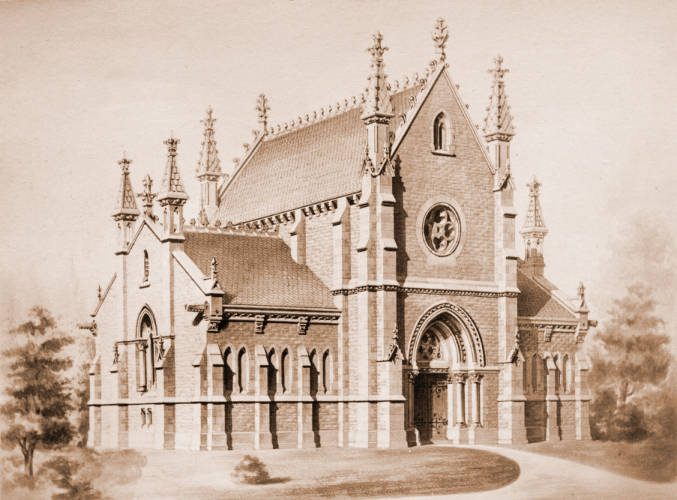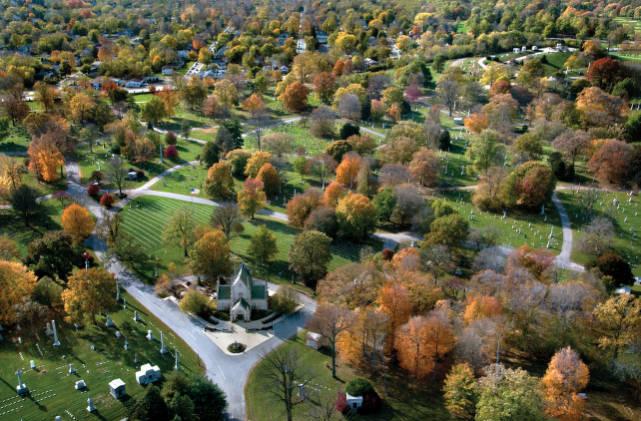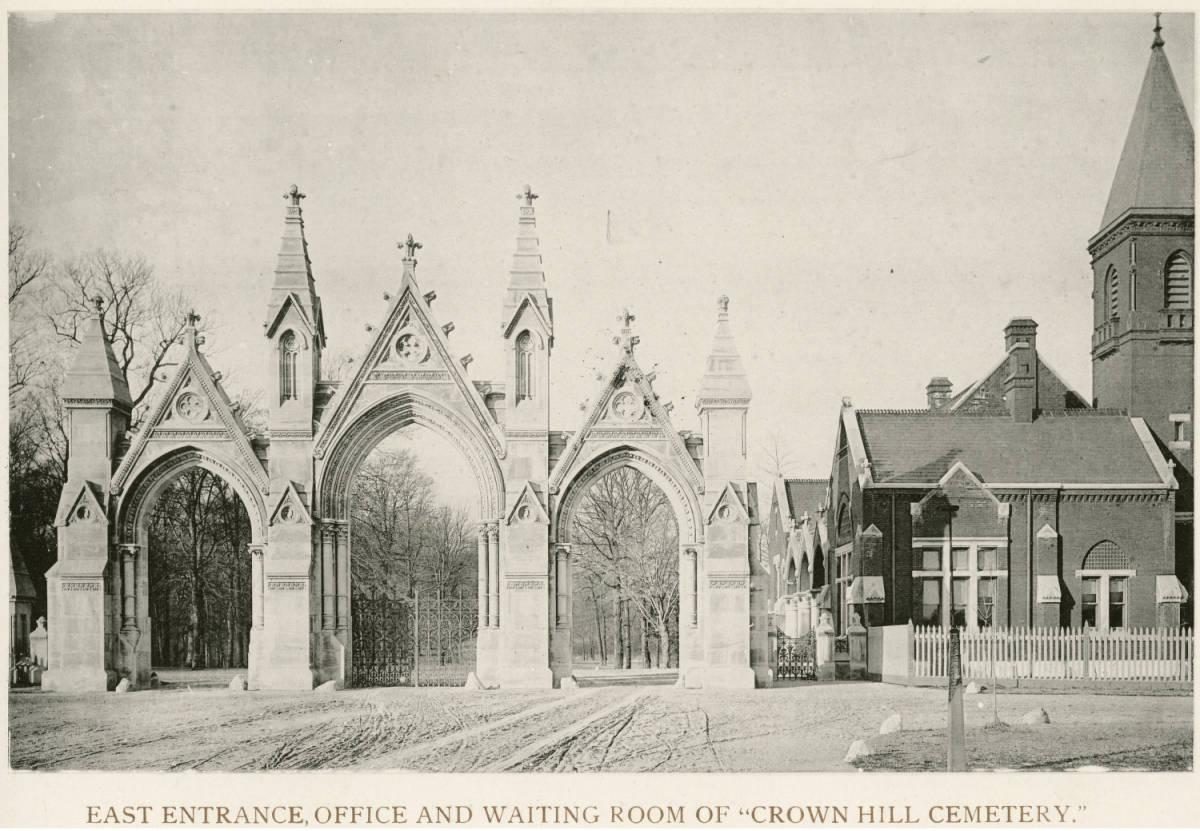Crown Hill Cemetery was officially incorporated as a nonprofit, nondenominational cemetery on September 25, 1863. Prior to Crown Hill, Greenlawn Cemetery on the southside of Indianapolis was the principal burial ground for the city. Concern over Greenlawn’s limited acreage and lack of care spurred the creation of a 30-member board to organize a new cemetery (see ). The area selected was scenic farmland on the northside of the city, which featured one of the highest points in Indianapolis–Crown Hill.

The board contracted with Frederick W. Chislett, a landscape architect from Pittsburgh, to design the cemetery shortly after it purchased roughly 236 acres of land for $51,000. The following spring Chislett supervised the development of seven burial sections. Lucy Ann Seaton became the first interment on June 2, 1864, one day following the cemetery’s dedication. Josephine Jones became the first African American to be buried at Crown Hill on February 19, 1865.
In November 1866, 707 Union soldiers who died during the were removed from Greenlawn and interred at Crown Hill in a lot south of where the Gothic Chapel would eventually stand. The United States government purchased this 1.37-acre lot to become the second of three national military cemeteries in Indiana. Two years later the first Decoration Day (Memorial Day) service in Indianapolis was celebrated here, highlighted by a speech by Gov. Conrad Baker. This traditional ceremony recurs each May on Memorial Day.

Through its long history, there have been several major structures built on the cemetery’s property. In 1875, construction began on an impressive limestone chapel designed by and built by Peter Routiers. The Gothic Chapel was erected in the very center of the cemetery and was used as a temporary storage vault for the dead.
The main entryway to Crown Hill was moved from Michigan Road to 34th Street and Boulevard Place in 1885. designed an elaborate limestone archway for the new entrance as a companion to a brick administration building (the “Waiting Station”). The Waiting Station served as the cemetery office until 1969 when a new administrative office building was constructed at 38th Street (formerly Maple Road).

In 1914, construction began on a brick and wrought iron fence designed by . The fence was not officially completed until the 1930s. It surrounds three sides of the south grounds as well as the southernmost end of the north grounds—both areas being separated by 38th Street. The fence underwent restoration from 1985 to 1992.
In 1925, a bridge/subway was constructed beneath 38th Street so that cemetery visitors could access both sides of the cemetery without leaving the grounds.
Two different homes once stood on the Crown Hill grounds, each constructed as a residence for the superintendent and his family. The first of these was erected in 1869 and stood until 1917. The second, built in 1914, was removed in 1950. Other dwellings, including employee quarters, barns, stables, and shops, were built throughout the cemetery grounds.
Other major structures on the grounds include the Community Mausoleum (ca. 1950), the Administration Building (1969), the Crown Hill Funeral Home (1993), private mausoleums, and several garden crypt buildings (located on the north grounds). The grounds are also home to many pieces of public art including the monument that stands atop the Crown Hill where poet is buried, the Forrest Memorial, three limestone Greek goddesses purchased from the old Marion County Courthouse, and an Equitorial Sundial created by David L. Rodgers.

More than 200,000 people are buried and entombed at Crown Hill, including President and , the first African American woman to represent Indianapolis (and the first Black congresswoman from Indiana) in the U.S. Congress. The cemetery also contains the remains of three U.S. vice presidents (, , and Thomas Riley Marshall), 10 Indiana governors, 14 mayors of the city, and over a dozen generals of the Civil War. Other notable people include , movie actor , and gangster . In 1931, 1,616 Confederate soldiers who died while prisoners of war at (1862-1865) in Indianapolis were reburied here from Greenlawn.
Crown Hill Cemetery was listed on the National Register of Historic Places in 1973. In continued efforts to preserve the cemetery, the Crown Hill Heritage Foundation was established in 1984 “to preserve the historic structures, the cultural heritage, and the great natural beauty of Crown Hill Cemetery.” This has been achieved through a historic preservation program as well as a variety of tours and events.
Native to Crown Hill’s 555-acre park-like setting are deer, squirrels, raccoons, foxes, and red-tailed hawks as well as 130 species of trees. On the northern border of the cemetery is an old-growth forest with trees over 300 years old. The cemetery tried to sell this land in 2007 to a retail/condominium developer, but concerned residents alongside the Alliance of Crown Hill Neighbors successfully fought against this effort.
In 2015, the cemetery sold this same land to the Department of Veteran Affairs, which planned to develop the 14.75 acres into a site for the cremated remains of veterans. Residents once again took up the fight to save the forest. After two years, the cemetery came to an agreement with the VA to pursue a land swap, allowing the veteran space to be built while preserving the old-growth forest.

Help improve this entry
Contribute information, offer corrections, suggest images.
You can also recommend new entries related to this topic.
